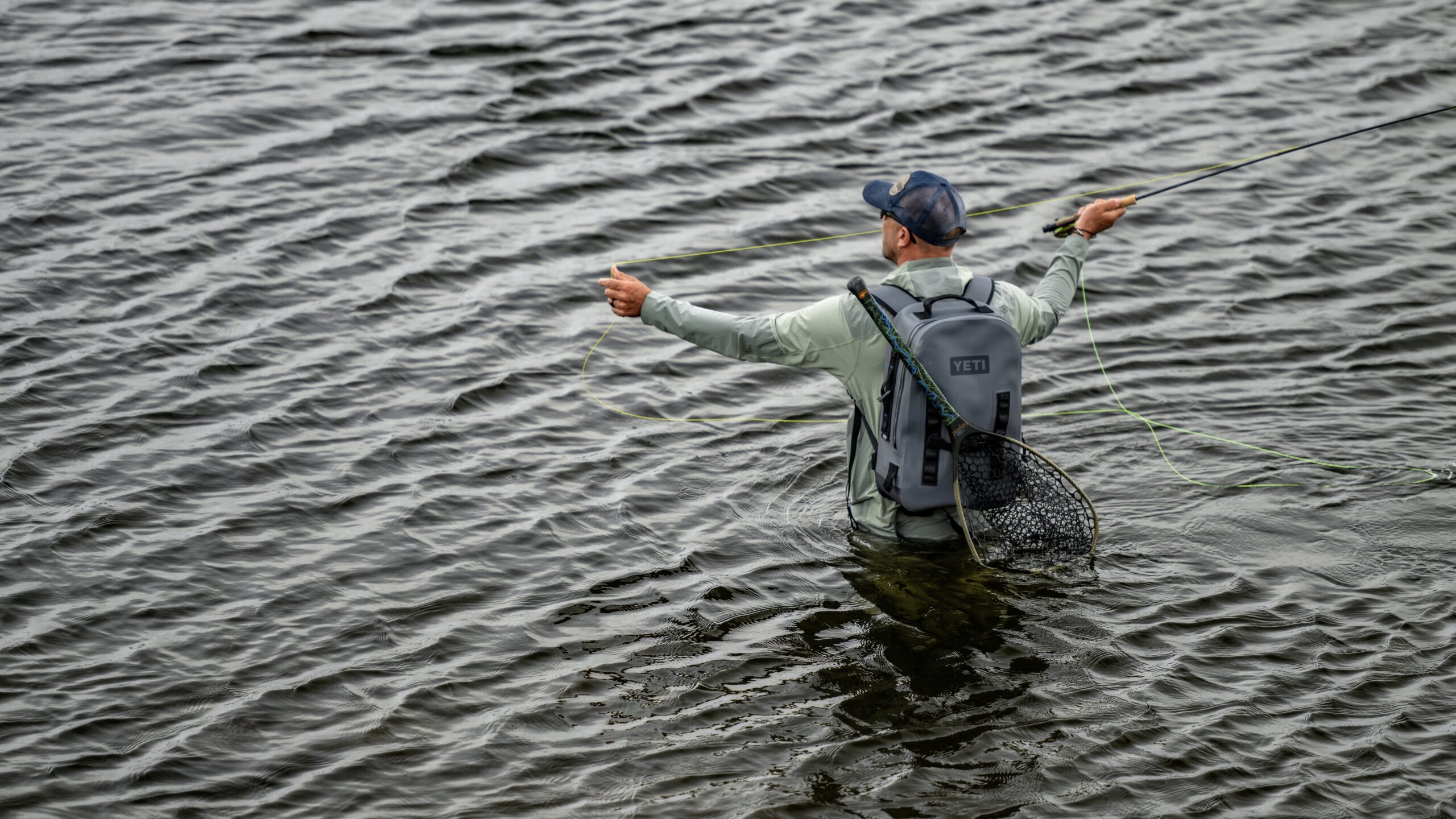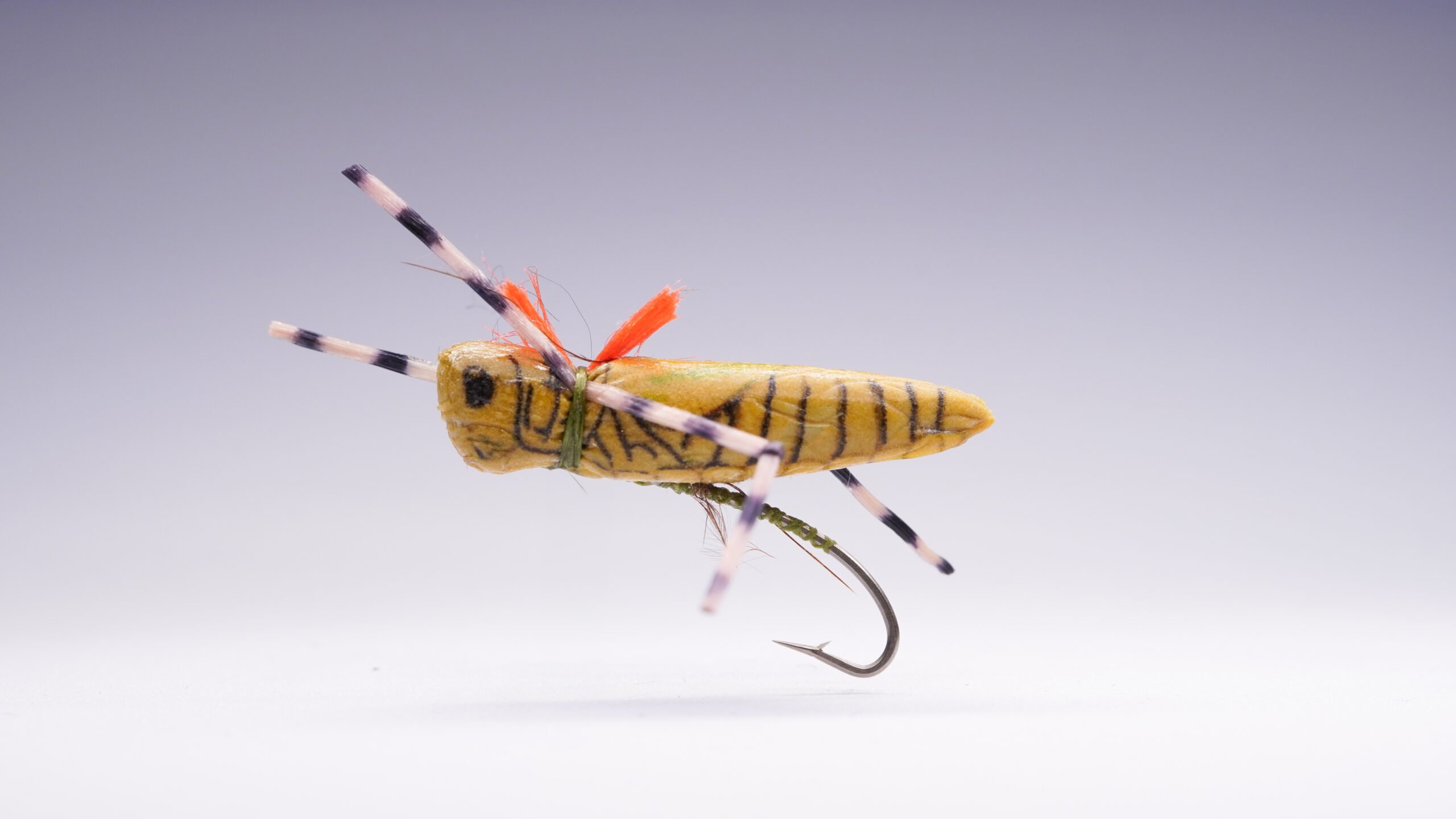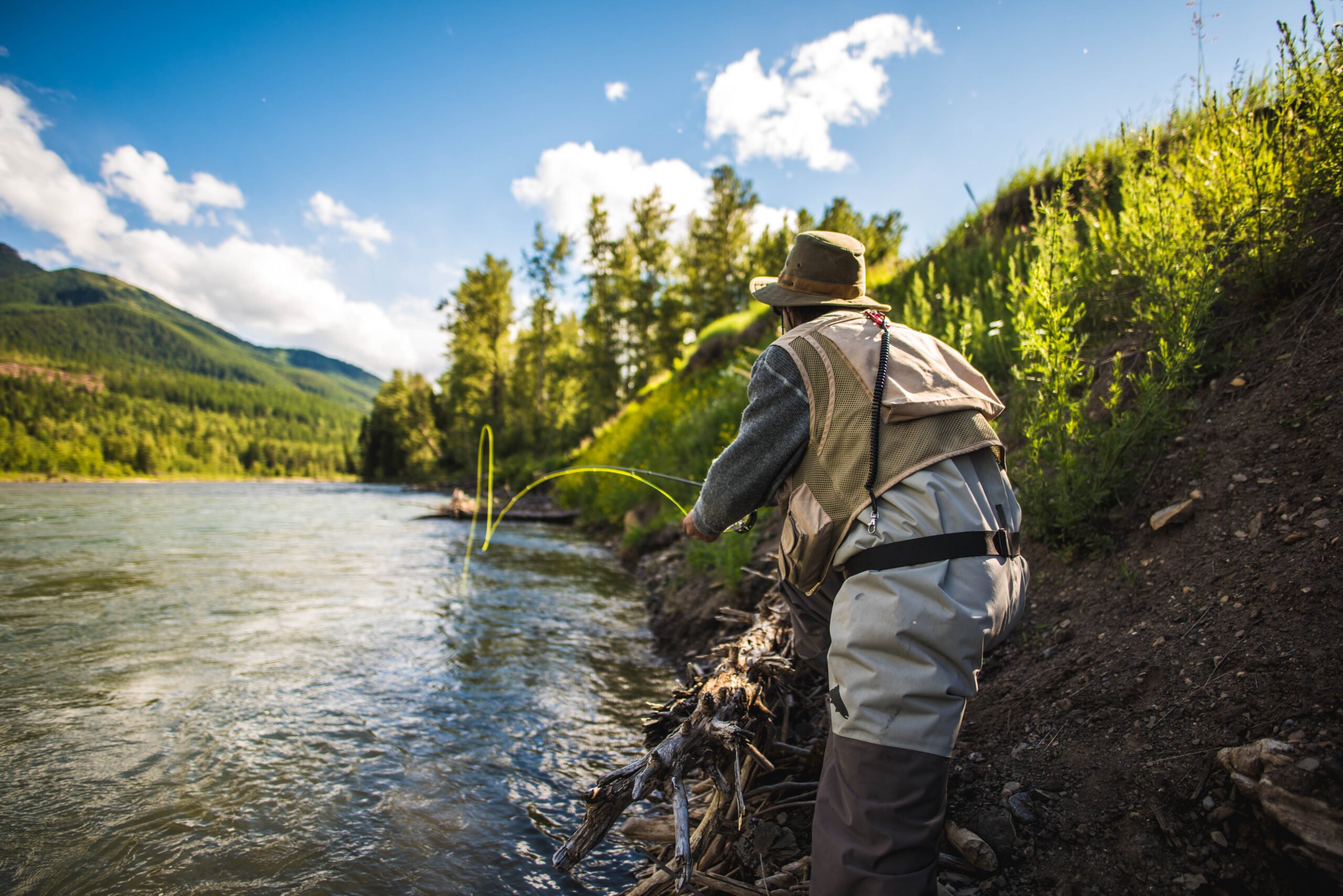Throwback to the first season of the Fly Fusion Series with Al Ritt on the vise. Filmed on location at Island Lake Lodge, nestled in the heart of the Rockies in the Kootenay region of British Columbia.
The Distance Cast

By Jeff Wagner, Field Editor, Fly Fusion
As many of you know, one of my favourite topics is distance casting, so it’s not by chance that one of my first casting videos was on, you guessed it – distance casting. It’s been a while since I’ve discussed that, and it’s always worth revisiting. This article is intended to provide more detail on the same topic.
The Trout System

By Jeremy Davies
All Photos © Frank Brassard
If you look at the first trout system and compare it with the new collection of flies featured in the Summer 2025 issue, you’ll see an evolution and an improvement in the patterns. Every year, Jeremy Davies goes on the hunt for new materials — testing new hooks, beads, dubbing, and other products that will enhance our time and success on the water. Below are 6 bonus patterns for your tying. Pick up the Summer issue to see 20 more innovative flies you will want to add to your fly box.
Jim McLennan Talks Streamers (Part 2)

In this Fly Fusion Magazine podcast, Jim McLennan and Derek Bird continue their discussion about streamer fishing. This is part two of a two part podcast (click here if you missed part one) and in today’s instalment they talk about cutting down on leader length, how to adjust the casting stroke for heavy flies, and Jim’s aversion to rabbit strip streamers.
Jim McLennan Talks Streamer Fishing

In this Fly Fusion Magazine podcast, Jim McLennan and Derek Bird talk about a variety of streamer techniques. This is part one of a two part podcast and in today’s instalment they cover fishing streamers from a drift boat, swinging streamers and dead drifting streamers. Visit us again tomorrow for part two when Jim and Derek finish up their conversation by discussing how to adjust the casting stroke for heavy flies and Jim’s aversion to rabbit strip streamers.
Image: Paula Shearer
Landon Mayer on Shoot Mending

A basic mend involves moving the rod tip in a half-circle motion that positions fly line upstream of the leader, flies, or indicator. This removes the tension applied by the moving current and helps you improve the depth and control of your presentation. The downside of the basic mend is how long it takes to perform, and the water-disturbing and fish-disturbing movement it imparts to the fly.
When I was younger, I not only spent as much time on the water as I could, but I read every fly-fishing book on the shelf over and over again. I also watched instructional videos. Doug Swisher, who presented his Mastery Series of videos with Scientific Anglers, is one of my teaching idols. In his video on selective trout, he demonstrates the stack mend for use with sinking flies. It’s performed by throwing a mini-cast with a “micro-second wrist” toward the flies or indicator. This places slack line out near the fly where it is most beneficial. Several stack mends are made in quick succession, which allow the fly to sink quickly and drift naturally.
Years ago I started using the same method with a sideways approach to replace the standard mend. I call it “shoot mending.” I make the same micro-second-wrist cast with the tip of the rod moving forward only one foot. I then lift the rod up two to three feet to allow clearance for the line. Then, by quickly making one or two mends while the line is in the process of shooting, I get a mend that’s already in place when the line lands on the water. It’s also a very effective technique for shooting mends through wind and over chop in still waters without taking the indicator or dry fly away from the target.
The Secret River | Gary Borger
My first encounter with the secret river occurred in the summer of 1956, just after my twelfth birthday. It was early
morning, and I had walked to a new section of the large trout stream near home. It was a long walk, but I was an initiate fly fisher, and I set out in eager anticipation of using my newfound skills to finally conquer the big browns that I knew inhabited the stream.
I was slogging along in the shallows at the edge of a long riffle, headed for a big, downstream corner pool. My oversized hip boots (“He’ll grow into them”) slipped and slid on the rocks, and I moved slowly, afraid of twisting an ankle. Suddenly, right there in front of me, was a truly big brown trout. We saw each other in the same instant, and the fish’s reaction was as startled as mine. It blasted out of the inches-deep water into the heavy flow of midstream, as I cast furiously after it. I later understood that it had been in the shallows hunting Isonychia mayfly nymphs that were hatching at that time of year.
Advance 30 years, and my wife, Nancy, and I were fishing near Twizel on New Zealand’s South Island. The evening was mild beneath a deepening blue sky, and the fish were rising. Nancy fished a long riffle and was into fish immediately. I headed up to the long pool above. Standing at stream edge and scanning the quiet, dark surface, noticed a big nose poke out about 40 feet upstream, close to shore. It was an easy cast. No trees behind, and none overhanging the water. The 4-weight line settled quietly to the surface. But that was the end of quiet. The water erupted as several big fish tore out of the shallows in panic. Foolishly I had not thought that other fish could be in the secret river.

What’s New in the Tying Game?
If you’re like me, you spend an unhealthy amount of time looking at fly fishing gear. Though you may not need that new seal disc drag fly reel or the matching blue backing, you still look, nonetheless. Those of us who tie tend to fall into the same routine, clicking that “What’s New” category in fly tying, to see the latest and greatest in the fly tying world. We do this knowing we probably won’t deviate far from the pheasant tails, hares ears, caddis, and simulators that overflow our boxes. Yet, these days, it seems like there are new products to be excited about; and unlike rods, reels, waders, and boots, fly tying materials often don’t break the bank.
In the Spring 2021 issue, Dana Harrison reviewed some newly released fly tying products to see if they live up to the hype. Following are a few patterns he tied up in the process.

How To Use Sinking Leaders
In this episode of RIO’s “How To” series, RIO R&D Product Manager Chris Walker explains how to fish sinking leaders. Sinking leaders (or VersiLeaders in the RIO stable) are great additions to a floating line to turn it into an instant, and temporary sink tip. Chris explains the difference between sinking leaders and sinking tips, how to attach the right amount of tippet to a sinking leader, and runs through the RIO portfolio of sink rates and VersiLeader options.
First Venture to Salt | Jordan Oelrich

“Eighty feet. Two o’clock. Go!” The cadence of my heart increased until I thought it was about to beat through my chest. With a tarpon visible against the cream-coloured bottom, I was told to make a backhand cast into a stiff crosswind and drop my fly on a target the size of a dinner plate. Right.
But they say even a blind horse finds water once in a while and my white Tarpon Toad whistled through the air and landed precisely where I had intended, with slightly more authority than I would have liked. The tarpon now had a tantalizingly presented fly resting less than three feet from the tip of its beak. Strip, strip, pause. Both my hands were shaking uncontrollably. The fish swam slowly towards the fly but decided this was not to be my lucky day, then it exited the wind-blown flat. Game over.

